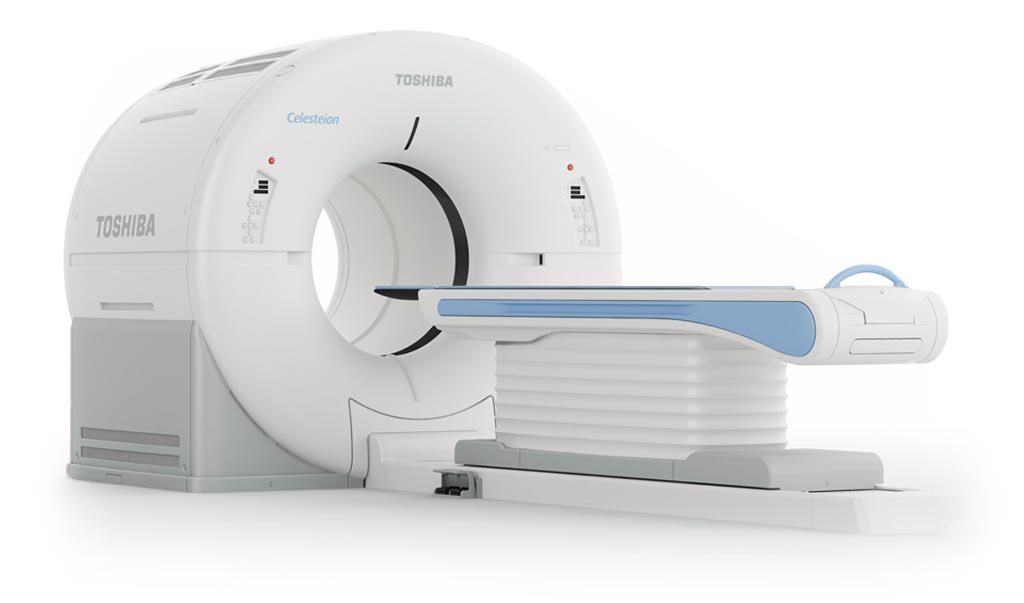Upgraded System Improves Image Reconstruction
By MedImaging International staff writers
Posted on 22 Jun 2017
Innovative patient-centered design helps an improved positron emission tomography/computed tomography (PET/CT) system deliver a safer and more comfortable experience.Posted on 22 Jun 2017
The Toshiba Medical (Tokyo, Japan) Celesteion PUREViSION Edition PET/CT system possesses a 90 cm wide CT bore that facilitates compliance by creating a sense of openness, thus putting patients at ease and offering versatile positioning for optimal treatment planning. The system includes a 16-row PUREViSION CT detector that acquires high-quality CT images with a 70 cm true field-of-view.

Image: The Celesteion PUREViSION Edition PET/CT system (Photo courtesy of Toshiba Medical Systems).
To ensure that clinicians do not have to choose between efficiency and safety, the system comes with adaptive diagnostic solutions as standard, such as adaptive iterative dose reduction 3D (AIDR 3D) technology and SUREFLiGHT reconstruction technology, which includes point of spread function and time-of-flight techniques, providing oncologists with sharper images and high contrast for enriched visualization of small tumors throughout the body. Another feature is the single energy metal artifact reduction algorithm (SEMARTM), which helps reduce artifacts caused by metal implants.
“We developed the Celesteion PUREViSION Edition with our customers’ needs in mind,” said Dominic Smith, senior director of the CT, PET/CT, and MR Business Units at Toshiba America Medical Systems. “Accuracy is everything when treating oncology patients, and Toshiba Medical is committed to providing our customers with the high-quality imaging solutions they require to provide efficient, effective patient care.”
PET is a nuclear medicine imaging technique that produces a 3D image of functional processes in the body. The system detects pairs of gamma rays emitted indirectly by a positron-emitting radionuclide tracer. Tracer concentrations within the body are then constructed in 3D by computer analysis. In modern PET-CT scanners, 3D imaging is often accomplished with the aid of a CT X-ray scan performed on the patient during the same session, in the same machine.














